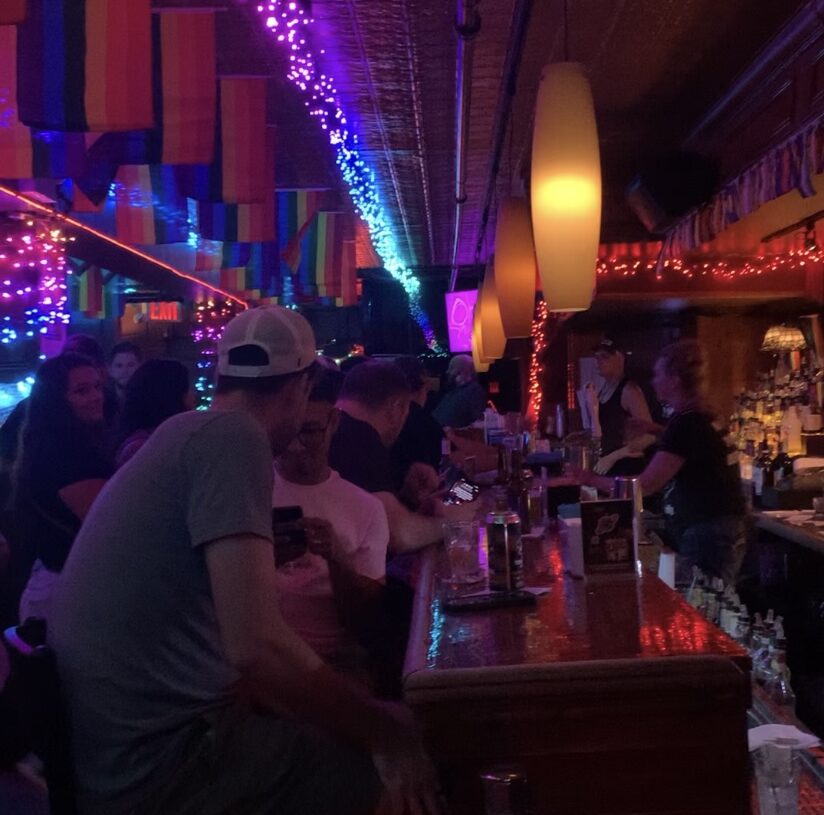In an era where dating often feels like an obstacle course, where every match can lead to frustration before the first drink is even poured, finding a community that embraces you for who you are becomes a radically liberating act. It’s not an escape, but a return to the possibility of experiencing relationships with lightness, desire, and authenticity.
This is what’s happening for a growing number of young queer women and non-binary people who are finding in the new sapphic urban spaces constructed not just as places to flirt, but, more importantly, emotional and social homes as well.
Once upon a time, lesbian women and members of the LGBTQ+ community could count on only a handful of bars that openly catered to them. Historic venues like Cubbyhole or Henrietta Hudson in Greenwich Village held out against gentrification and time, but they had come to feel more like relics than refuges. After the pandemic, many feared these spaces would disappear for good, leaving behind a void that seemed impossible to fill. And yet, something changed. Quietly, fluidly, almost organically, a new wave of queer sociality began to emerge.
This rebirth stems from a simple and powerful for connection. But it takes on completely new forms ones that move beyond the binary logic of “going out to hook up.” Today, attending a sapphic party means entering an emotional ecosystem where dance, community, aesthetics, and politics intertwine. It’s a multifaceted experience, designed to welcome and celebrate every identity, often with intentional inclusion of Black, Indigenous, and People of Color (BIPOC) and gender-nonconforming individuals.
These nights take many shapes, like a fan opening to different desires. Some choose to dance until dawn at loud, chaotic parties like the ones at The Woods in Brooklyn, where the line starts forming at 10 p.m., the crowd is young, and the energy electric. Others seek more relaxed spaces like PAT, also in Brooklyn, where you can show up in a T-shirt, no makeup, and connect with like-minded people without performance anxiety. Then there’s the craving for curated intimacy, which comes alive at events like Chardonngay born from a simple post, now a web of deep connections built over glasses of prosecco and first meetings that turn into lasting relationships.
Some prefer the understated elegance of a night like Exes, in both Brooklyn and Manhattan, known for its older crowd and impeccable aesthetic. Others are drawn to the political and cooperative ethos of Boyfriend Co-Op in Brooklyn which, as the name indicates, is a cooperatively run bar that hosts game nights, themed gatherings, and even “soup nights” designed to foster low-pressure socializing.
What unites all these experiences is care not only for the physical space, but for the emotional atmosphere. Every event is crafted to encourage authentic connection. Organizers, often members of the community themselves, work to ensure that each guest feels seen, welcomed, and safe. In some cases, they even message attendees ahead of time to check who might be arriving alone, helping them integrate into small groups. A small gesture that can mean the difference between feeling excluded and feeling part of something.
The success of these spaces is no accident; it’s a creative response to a deep need: to escape the alienation of dating apps, the hostility of straight environments, and the loneliness of big cities. The queer feminine world—so often marginalized even within the LGBTQIA+ community—is claiming its space not only as one of sexual expression but as fertile ground for solidarity, humor, and love in all its forms.
What emerges from this new landscape is an idea of community that welcomes without demanding sameness, that is desirable without being predatory. Every gathering becomes a chance to be seen and to see others—to rewrite the rules of how we come together, in love and in social life.










